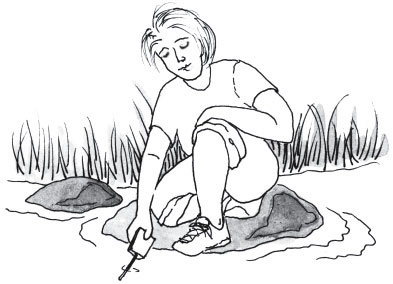Materials
protective gloves
goggles
waterproof digital temperature probe with long wire
or thermometer plus TERC water pump sample collector
GL data sheet
Procedure
1 Find a good location for depth measurements. (Ideally this would happen from a dock or boat where you would have access to deeper water.)
2 Put on protective gloves if you are sampling near shore.
3 Measure the temperature of the water at the surface by submerging the temperature probe to a depth of 5 cm in several locations.
4 Either weight and lower your digital thermometer or, use the TERC water pump, take water samples at depths of 5 (if you did not do surface testing), 10cm, 50 cm, 100 cm, 150 cm, and (optional) 200 cm, and so on.
Measure the temperature of these water samples in the field using the temperature probe.
